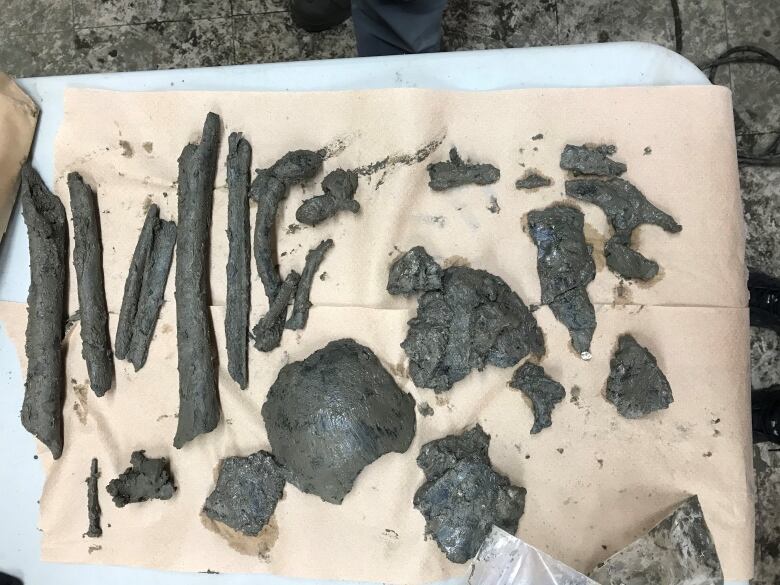Evidence of mass Irish grave site unearthed during REM light-rail dig
Some 6,000 people died of typhus in the 1840s, and many were buried in unmarked graves

During work ona futurelight-rail station in Pointe-Saint-Charles, archeologists have discovered what could be the bones of Irish immigrants whodiedafter fleeing the Great Famine more than a century-and-a-half ago.
The dig site is a stone's throw fromthe Black Rock a three-metre-tall boulder that, erected in 1859, marksthe site where some 6,000 people are buried.
Workers on theRseau express mtropolitain (REM)aredigging a hole to to install a concrete support pillar for its trains.
As part of the survey, they sent in a team of archeologists whodiscovered the bones of 12 to 15 people.
Archeologists were lowered by crane into the ground and have been workingto excavate the remains by hand.

In 1847 some 6,000 Irish famine refugees died of typhus in Pointe-Saint-Charles. It's believed they were buried in a mass grave.
"We made sure that the work here would be done with respect," saidElizabeth Boivin, the REM's deputy director of environment.
Wood that may be from coffins has also been unearthed in the dig.

Before crews began digging in June, a ceremony was held in collaboration with the Irish community.
Largest Irish grave site outside of Ireland
Because the dig affects less than oneper cent of thesite, the project will leave many other graves undisturbed, Boivin said.
Still, finding evidence of as many as 15 bodies in such a small area demonstrates just how many people are buried there givingcredence to the claim that it is the largest Irish grave site outside of Ireland, saidFergus Keyes.
He has been co-leading a push for a memorial park near the site for the last decade.

"We always knew that, in that area, 6,000 Irish were buried," Keyes said. "Nobody has ever dug into that earth since the mid-1800s, as far as we know."
The hope is that lab tests will provide more information about who they were, how they lived and how they died, Keyessaid.
Then they'll be put back close to where they where found.
"We will re-inter them in a very nice, proper ceremony at some point near the Black Rock," he said.
With files from Simon Nakonechny












_(720p).jpg)


 OFFICIAL HD MUSIC VIDEO.jpg)
.jpg)



























































































